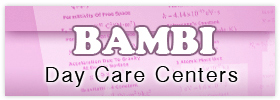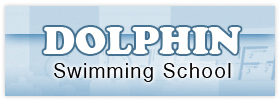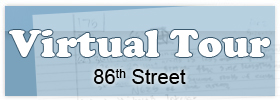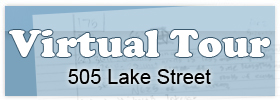Accelerated ELA Curriculum Grades 3-8 Preparation for SHSAT and PSAT 8/9
Upper Elementary Division Instructors
The Big Apple Academy’s English Language Arts Program is uniquely designed to bridge the transition from the Lower Elementary Division to the Upper Elementary Division where young learners are introduced to so many new and truly innovative experiences. In the Upper Elementary Division, students in Grade 3 through 5 are fully immersed in a myriad of reading experiences of many different genres. Setting aside electronic gadgets, students instead pick up their books to become a part of a literary community in which they learn to take ownership of their own reading journeys and understandings of texts.
In addition to learning how to read, analyze and interpret literary text, students are also fully engrossed in the study of English grammar, thus building solid foundation for future writing and standardized exams.
Junior High School
At the Big Apple Academy, the ELA curriculum is advanced and accelerated by a full year of study. Between grades 6 and 8, students are introduced to the studies of literature and composition. As a result, these young scholars read different genres from the canons of English and American Literatures.
Additionally, students enrolled in Junior High School at the Big Apple Academy become fully immersed in the study of English grammar, which then culminates not only in their writing abilities, but also in preparation for the SHSAT exam (entrance exam into Specialized High Schools) and the PSAT 8/9 exam which opens the pathways for further study in preparation for higher education. As a result, the Big Apple Academy confidently offers the a high school level English Language Arts Regents Exam to its Grade 8 students, giving them an opportunity to gain high school credit.
Instructors
1. Dina Kuzminer, Chairperson, English Department
Ms. Kuzminer received her B.A. in Literature at SUNY Buffalo and her M.A. in English Literature from the University of Vermont. In addition to serving in an administrative capacity and teaching, Ms. Kuzminer is also a writer, a gardener, and an avid hockey fan.
2. Gennady Rozhdestvensky has taught English at middle school for more than twenty years. His full-time reading and language arts teaching career at the Big Apple Academy began in 1999 as an English Language Development instructor, helping kindergarteners and elementary-school students develop their reading and speaking skills. His experience as an ELD instructor challenged him to seek questions that promote, develop, and assess students’ critical thinking. Since then he has developed and written his own testing materials for middle-school students applying for Specialized High Schools in NYC. Mr. Gena focuses most of his attention on building a strong vocabulary to allow students to communicate their thoughts effectively and on teaching grammar in ways that help students to develop their critical thinking. He has graduated with highest honors from CUNY’s College of Staten Island with a degree in Psychology.
3. Ms. Olga Strausov is a passionate and dynamic teacher who has worked in education for over twenty years. She received a bachelor’s degree in creative writing from New School University and a master’s degree in Secondary Education English from Brooklyn College. She is certified to teach English grades 7-12. Ms. Olga has taught in both middle and high schools and is committed to helping students foster critical thinking skills and inspire them to love literature and writing.
4. Ms. Lauren George was born and raised in Brooklyn. She is a dedicated educator with a love for reading, music, and cooking. Ms. Lauren is passionate about inspiring young minds. She strives to empower her students with the skills they need to explore the world around them. When she’s not in the classroom, you can find her with a good book, exploring new recipes, or enjoying music.
5. Maksym Omelchenko is a dedicated and passionate elementary school teacher with a diverse background and extensive education. He obtained a B.A and an M. A. in English Language and Foreign Literature from Kirovohrad Pedagogical Academy in Ukraine. Once he arrived in the USA, he continued his journey in the field of education, and now holds a M. S. in Childhood Education and a Special Education Degree from Touro Graduate School of Education and Psychology. Maksym’s commitment to professional growth is evident through his participation in seminars and workshops focused on autism, substance abuse, child abuse, child safety education, school violence prevention and intervention, and bullying and harassment. Finally, Maksym is fluent in English, Russian, and Ukrainian, which allows him to effectively communicate with a diverse range of students and parents.
6. Enza DiFilippi has had a love for reading from the moment she learned how to read in first grade. Although English had not been her first language when she entered Kindergarten (Italian was), she did not let that get in her way. Her love for reading soon helped her to develop her writing skills. While attending Brooklyn College for her M.A. in Education, her professors suggested that she consider publishing some work in the future. Whether that will happen remains to be seen. Nonetheless, Ms. Enza has been delighted to teach English at Big Apple Academy and to inspire children to share her same love for reading and writing. She uses her many years of teaching experience and knowledge of English literacy to educate students at Big Apple. In her free time (when she is not grading or planning her lessons), she enjoys listening to different kinds of music and learning other languages, such as Spanish, Arabic, and Russian.
7. Mr. Mark Silverberg has attended Baruch College and Syrit Computer School. In addition, he has completed the Schools Attuned Program of Bank Street College of Education, along with a myriad of workshops. The All Kinds of Minds program/track provides educators with a delivery system that is highly effective and provides both general and special educators with tools needed to collaboratively serve and teach students with various abilities and backgrounds, thus reaching the mind of every student. Mr. Mark has taught English/Language Arts since 1993. He enjoys reading and lives with his family in Brooklyn.
8. Erica Lemma has been an English teacher at Big Apple Academy for over ten years. She holds both a B.A. and an M.A. in English literature. Over her many years of teaching, Ms. Erica developed a strong set of skills that help to deliver information to students and has a lengthy record for success. When she is not working, you can find her at her dancing school, educating children in all genres of dance.
- READING
- Distinguish between print and pictures
- Recognize the difference between letters and words
- Follow left-to-right and top to bottom direction when reading
- Locate parts of a book
- Recognize and identify letters of the alphabet
- Alphabetize high-frequency words according to the first letter
- Distinguish the difference between vowels and consonants
- Use beginning and ending consonants, as well as vowel sounds, to identify words
- Recognize the different sounds that make up a word aloud, matching spoken word to print
- Recognize words in a text or on a chart when read aloud, matching spoken word to print
- Recognize the singular and plural of frequently used words
- Recognize own name and the names of friends and family in print
- Recognize letter-sound correspondence
- Recognize that words consist of a combination of sounds
- Identify rhyming words
- Monitor own reading by applying strategies (e.g., sounding out letters; using context, grammar, and picture clues; and rereading) to determine meaning
- Read aloud with expression and fluency
- Use computer software to support early reading development
LISTENING
- Listen respectfully and responsively
- Attend to a listening activity for a specified period of time
- Avoid interrupting
- Respond with expression appropriate to what is heard
WRITING
- Create a drawing, picture, sign, or other graphic to represent a word or concept
- Follow left-to-right and top-to-bottom direction when writing
- Use spacing between letters and words when writing on a line
- Write recognizable upper- and lowercase letters in manuscript
- Capitalize the first words of sentences, the letter “I,” and proper nouns, such as names, days of the week, and months
- Write the letters of own first and last names
- Spell high-frequency words correctly
- Use the singular and plural of high-frequency words
- Put words together in sentence format by using – end punctuation, such as periods- various parts of speech, such as nouns and adjectives, and verbs
- Begin to edit your writings, with assistance
- Use beginning-of-sentence capitalization and end punctuation
- Use classroom resources, such as word walls, picture dictionaries, teachers, and peers, to support the writing process
- Give and seek constructive feedback in order to improve writing
- Use computer software to support development of early writing skills
SPEAKING
- Respond respectfully
- Use age-appropriate vocabulary
- Take turns speaking in a group
- Correct the pronunciation of words by using classroom resources, such as teachers, peers, audio- and videotapes, and computer software
- Speak in complete sentences when required
- Stay on topic
- Speak audibly
- Speak with expression appropriate to the occasion
- READING
- Identify purpose for reading
- Use letter-sound correspondence, knowledge of grammar, and overall context to determine meaning
- Use decoding strategies, such as sounding out words, comparing similar words, breaking words into smaller words, and looking for word parts, such as root words, prefixes, and suffixes
- Use self-monitoring strategies, such as rereading and cross-checking
- Apply corrective strategies, using classroom resources, such as teachers, peers, and reference tools
- Recognize the difference between phrases and sentences
- Read with attention to sentence structure and punctuation, such as periods, question marks, and commas, to assist in comprehension
- Engage in independent silent reading
- Locate the name of the author, illustrator, title page, table of contents, index, and chapter headings
- Recognize and discriminate among a variety of informational texts
- Determine the meaning of unfamiliar words by using context clues, dictionaries, and other classroom resources
- Read aloud at appropriate rate
- Read with increasing fluency and confidence from a variety of texts
- Maintain a personal reading list to reflect reading goals and accomplishments
- Use computer software to support reading
LISTENING
- Listen respectfully and responsively
- Attend to a listening activity for a specified period of time
- Avoid interrupting
- Respond appropriately to what is heard
WRITING
- Begin to develop a voice in writing
- Spell frequently used words correctly
- Use basic punctuation correctly, such as commas in a series, in simple/compound sentences, and in friendly letters periods, exclamation points, and question marks apostrophes for contractions and singular possessives, quotation marks for titles and simple dialogue
- Use, in writing simple/compound sentences, – correct tense of regular/irregular verbs – subject-verb agreement – varied vocabulary and sentence structure – various parts of speech, including personal pronouns
- Capitalize words such as literary titles, holidays, and product names
- Write sentences in logical order and create paragraphs to develop ideas
- Use an organizational format that reflects a beginning, middle, and end
- Develop an idea within a brief text
- Learn and use the writing process (e.g., prewriting, drafting, revising, proofreading, and editing)
- Use revision strategies to develop writing, including conferring with teachers and peers, and cutting and pasting
- Determine the intended audience before writing
- Use legible print and/or cursive writing
- Use word processing
SPEAKING
- Respond respectfully
- Initiate communication with peers and familiar adults
- Use age-appropriate vocabulary
- Speak in grammatically correct sentences
- Use gestures appropriate to conveying meaning
- Establish eye contact, when appropriate, to engage the audience
- Speak loudly enough to be heard by the audience
- READING
- Identify purpose of reading
- Adjust reading rate according to purpose for reading
- Use word recognition and context clues to read fluently
- Determine the meaning of unfamiliar words by using context clues, a dictionary, or a glossary
- Identify signal words, such as finally or in addition, that provide clues to organizational formats such as time order
- Use knowledge of punctuation to assist in comprehension
- Apply corrective strategies (e.g., rereading and discussion with teachers, peers, or parents/caregivers) to assist in comprehension
- Read aloud, using inflection and intonation appropriate to text read and to audience
- Maintain a personal reading list to reflect reading goals and accomplishments
LISTENING
- Listen respectfully and responsively
- Identify own purpose for listening
- Recognize content-specific vocabulary or terminology
- Listen for unfamiliar words and learn their meaning
WRITING
- Understand the purpose for writing; the purpose may be to explain, describe, narrate, persuade, or express feelings
- Determine the intended audience before writing
- Use tone and language appropriate for audience and purpose
- Use prewriting activities (e.g., brainstorming, note taking, freewriting, outlining, and paragraphing)
- Use the writing process (e.g., prewriting, drafting, revising, proofreading, and editing)
- Use teacher conferences and peer review to revise written work
- Observe the rules of punctuation, capitalization, and spelling, such as punctuation of compound sentences, friendly/business letters, simple dialogue, and exact words from sources (quotations); use italics/ underlining for titles – capitalization of proper nouns such as key words in literary and/or book titles, languages, and historical events, spelling of commonly misspelled words, homonyms, and content-area vocabulary
- Use correct grammatical construction in – parts of speech such as nouns; adjectives and adverbs (comparative/superlative); pronouns (indefinite/nominative/objective); conjunctions (coordinating/subordinating); prepositions and prepositional phrases; and interjections – simple/compound/complex sentences, using, correct subject-verb agreement, verb tense, punctuation, and pronouns with clear antecedents
- Use signal/transitional words (e.g., in addition, for example, finally, as a result, similarly, and on the other hand) to provide clues to organizational format
- Use dictionaries, thesauruses, and style manuals
- Use word processing skills
SPEAKING
- Respond respectfully
- Initiate communication with peers, teachers, and others in the school community
- Use language and grammar appropriate to purpose for speaking
- Use facial expressions and gestures that enhance communication
- Establish eye contact during presentations and group discussions
- Use audible voice and pacing appropriate to content and audience
- Use visual aids to support the presentation
- READING
- Identify a purpose for reading
- Adjust reading rate according to the purpose for reading
- Use word recognition and context clues to read fluently
- Determine the meaning of unfamiliar words by using context clues, a dictionary, a glossary, and structural analysis (i.e., looking at roots, prefixes, and suffixes of words)
- Distinguish between dictionary meaning and implied meaning of the author’s words
- Identify transitional words or phrases, such as furthermore or in comparison, that provide clues to organizational formats such as compare/contrast
- Use knowledge of punctuation to assist in comprehension
- Apply corrective strategies, such as discussing with others and monitoring for misunderstandings, to assist in comprehension
- Seek opportunities for improvement in reading comprehension by choosing more challenging writers, topics, and texts
- Maintain a personal reading list to reflect reading accomplishments
LISTENING
- Adapt listening strategies to different purposes and settings
- Listen respectfully and responsively
- Identify own purpose for listening
- Recognize content-specific vocabulary or terminology
WRITING
- Understand the purpose for writing; the purpose may be to explain, describe, narrate, persuade, or express feelings
- Identify the intended audience
- Use tone and language appropriate to audience and purpose
- Use prewriting activities (e.g., brainstorming, note taking, freewriting, outlining, and paragraphing)
- Use the writing process (e.g., prewriting, drafting, revising, proofreading, and editing)
- Write clear, concise, and varied sentences, developing a personal writing style and voice
- Observe rules of punctuation, italicization, capitalization, and spelling as follows: – punctuate correctly simple/compound/complex sentences, undivided/divided direct quotations, exact words from sources (quotations), titles of articles/literary works, and business letters – use italics and underlining for titles – capitalize proper nouns, such as geographical names, academic courses, and organizations – spell correctly commonly misspelled words, homonyms, and content-area vocabulary
- Use correct grammatical construction in – parts of speech, such as nouns; adjectives and adverbs (comparative/superlative); pronouns (indefinite/nominative/objective); conjunctions (coordinating/subordinating); prepositions and prepositional phrases; interjections; and conjunctions to connect ideas – simple/compound/complex sentences; note especially subject-verb agreement, infinitives and participles, clear antecedents for pronouns, placement of modifiers, and use active voice
- Use signal/transitional words or phrases, such as first, next, and in addition, to produce organized, cohesive texts
- Use dictionaries, thesauruses, and style manuals
- Use computer software (e.g., word processing, import graphics) to support the writing process
- Write for an authentic purpose, including publication
SPEAKING
- Respond respectfully
- Initiate communication with peers and adults in the school and local community
- Adapt language and presentational features for the audience and purpose
- Use language and grammar appropriate to the purpose for speaking
- Use volume, tone, pitch, and rate appropriate to content and audience
- Use effective nonverbal communication
- Use visual aids to enhance the presentation
- Establish and maintain eye contact with audience
- READING
- Identify the purpose for reading
- Adjust the reading rate according to the purpose for reading
- Determine the meaning of unfamiliar words by using classroom and other resources
- Distinguish between dictionary meaning and implied meaning of the writer’s words
- Follow the logic of compound/complex sentence structure
- Use knowledge of punctuation to assist in comprehension
- Identify transitional words or phrases that make text cohesive (e.g., finally, in addition, and in contrast)
- Recognize the organizational format, such as hierarchical, chronological, and cause/effect
- Use strategies such as discussing with others, reading guides and summaries, and reading aloud to assist in comprehension
- Identify opportunities for improvement of reading comprehension skills; for example, exposure to seek a wider range of writers, topics, and styles
- Maintain a personal reading list to reflect reading accomplishments
LISTENING
- Listen respectfully and responsively
- Recognize the use and impact of effective language
- Demonstrate appropriate body language as a listener
- Identify own purpose for listening
- Recognize content-specific vocabulary, terminology, or jargon unique to particular groups of people
WRITING
- Understand the purpose for writing; the purpose may be to explain, describe, narrate, persuade, or express feelings
- Identify the intended audience
- Use tone and language appropriate to the audience and purpose
- Use prewriting activities (e.g., brainstorming, freewriting, note taking, outlining, and paragraphing)
- Use the writing process (e.g., prewriting, drafting, revising, proofreading, and editing)
- Write clear, concise sentences
- Observe the rules of punctuation, capitalization, and spelling – punctuation of simple and compound sentences, dialogue, titles of articles – capitalization of words such as proper adjectives, titles of persons, and words in quotes – spelling of commonly misspelled words, homonyms, content-area vocabulary
- Use correct grammatical construction – parts of speech, such as nouns; adjectives and adverbs (comparative/superlative); pronouns (indefinite/nominative/objective); conjunctions (coordinating/subordinating); prepositions and prepositional phrases; interjections; and conjunctions to connect ideas – complete simple, compound, and complex sentences of varied structure containing dependent clauses and using correct subject-verb agreement, correct verb tense, and pronouns with clear antecedents
- Use dictionaries, thesauruses, and style manuals
- Use an organizational format that provides direction, coherence, and/or unity
- Use computer technology to create, manipulate, and edit text
SPEAKING
- Respond respectfully
- Initiate communication with peers and adults in the school and local community
- Use a presentational format appropriate for the audience and purpose
- Use the conventions of standard spoken English appropriate to the message and audience
- Apply delivery techniques such as voice projection and demonstrate physical poise
- Use nonverbal communication techniques to help disclose message
- Use visual aids and props effectively
- Respond to the audience’s reaction and adapt presentation
- Establish and maintain eye contact with audience










